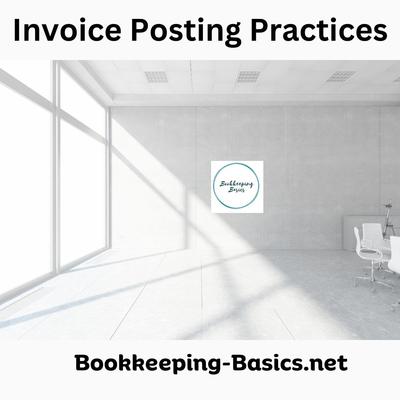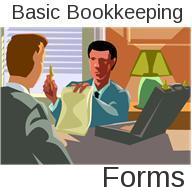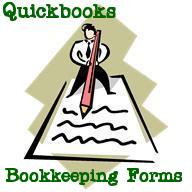Beginner Bookkeeper Posting Problem

Beginner Bookkeeper
The volunteer thrift store recorded its cash proceeds, and the director wanted to gift $50.00 cash to a thrift store volunteer. The bookkeeper had just received the cash proceeds when the director requested the $50.00.
The bookkeeper gave the director $50.00 from the recorded cash and later wrote a check from the store's deposit account to match the recorded total. However, the audit shows a $50.00 discrepancy. What bookkeeping entry can address this situation?
Bookkeeping Posting

Bookkeeping Posting
Is posting an expense, a debit entry to the expense account?
Business Mortgage Payment Posting
by Yolanda
(Philly)

Business Mortgage Posting
An owner bought a building and uses it to be his daycare center. The building is under his name and his mortgage check payment is made out of his daycare. How do I post this payment correctly? Treat it as a rent expense to the daycare and to owner as income or... one more thing his daycare is non-profit under registration.
Deleting Posted Payments
by Carol
(Pittsburgh PA)

Posting Integrity
After 38 years of working, I have always believed that a computer system should not allow staff to delete payments, charges and adjustments once they have been posted. Unfortunately, not everyone where I currently work believes in that statement. Is there some place I can get written proof that this is not a good practice? Thanks
Discount Posting Bookkeeping Question

Discount Posting
Jasmine buys goods from Reshma on 60-day credit terms.
Alternatively, a 10 percent cash discount is available on any payment received within 10 days.
During Feb, the following transactions took place.
Feb 2 jasmine buys $800 of goods
Feb 1w jasmine pays Reshma a cheque for $360
What is the balance of jasmine account in Reshma receivables ledger on 28 Feb?
How To Post Insurance Payout

Insurance Payout
One of our business vehicles was totaled. The insurance company has just paid it off. What is the best way to post it in my accounting software? It currently is still listed in the Long-Term Liabilities section.
Insurance Accrual Posting
by Gloria
(Calgary, AB)

Insurance Accrual Posting
How do I post Auto Insurance that is paid in installments? Do I post the total renewal amount then post the monthly deductions against it?
Insurance Premium Refund Posting
by Teresa
(Glen Allen, VA)

Insurance Posting
What two accounts do I post an insurance premium refund to?
Posting A Loan Correctly

Company Loan
I loaned another company $25,000.00 and later that week they paid it back in full. How should I post this in Quick Books?
Posting Chart of Accounts Adjustments
by David
(England)

Posting JE In SAGE
Mr Davis asks me to make the following changes to the chart of accounts:
Depreciation is to be charged for February in the following amounts:
Plant & Machinery £250
Office Equipment £200
Motor Vehicles £150
I am using Sage 50; how do I carry out this posting?
Posting Credit Card Purchases
by Cougs
(Toronto, ON, Canada)

Credit Card Posting
What is the cleanest way to enter a purchase of materials by credit card? Where on the balance sheet should the credit card be - with the bank accounts as an Asset or with Liabilities like a loan payable?
Posting Loss On Rental Properties

Rent Loss Posting
Posting Of Discount Transaction

Discount Posting
Jasmine has the option to purchase goods from Reshma on 60-day credit terms. Alternatively, Jasmine can avail a 10% cash discount if she makes any payment within 10 days of the purchase. In February, the following transactions took place:
On February 2nd, Jasmine buys goods worth $800.
On February 11th, Jasmine pays Reshma with a cheque of $360.
What is the balance of Jasmine's account in Reshma's receivables ledger at the end of February (28th)?
Posting Sales And Purchase Invoices

Invoice Posting Practices
A project closed on 5/19/2010 and we like to invoice on the project close date. Info was not sent to accounting for the invoice to be created until 6/4 though.
CFO said to back date invoices so we can maintain our 30-day payment terms and get paid 30 days after the project closes. He probably didn't foresee this problem. Shouldn't I date the invoice from 6/1 at the earliest though?
Posting Start-up Expenses For Sole Proprietor

Bookkeeping Startup Expenses
I have just recently started a bookkeeping business from my home. I have incurred appx. $700.00 in start-up expenses paid by my personal checks, cash or credit cards. The business has not generated any income as of yet should I post these expenses to an equity account? Thanks for your help.
Restaurant Food Posting

Restaurant Food Posting
If an employee of a restaurant leaves food out to spoil. The employer takes the money for the loss out of the employees next paycheck.
The employee's check will show a deduction for $25. Does that go against sales or purchases. Which account will be debited, and which credited?
Sch E to LLC 1031 Basis Posting
by Mes
(Jefferson, OR)

Recording 1031 Exchange
Do you post the carry over basis for 1031 property as a debit to fixed assets and a credit to equity? If not --- how do you post it?
Sole Proprietor Start Up Posting

Sole Proprietor Posting
When you start a sole proprietorship business and paid expenses out of your pocket before receiving income where do you post that in the books?
Posting To A GL Account

Posting Bank Account Credits
A credit is posted to your checking account by your bank because you transferred funds from another account to cover an overdraft. When posting this credit in your checking account register, what GL account should you post to? It's not "bank service charges" or "NSF" charges.
Like Bookkeeping-Basics.net?
Thank you for visiting ..
Before you go, please fill out the form below to start getting valuable money saving tips for you and your business now!































